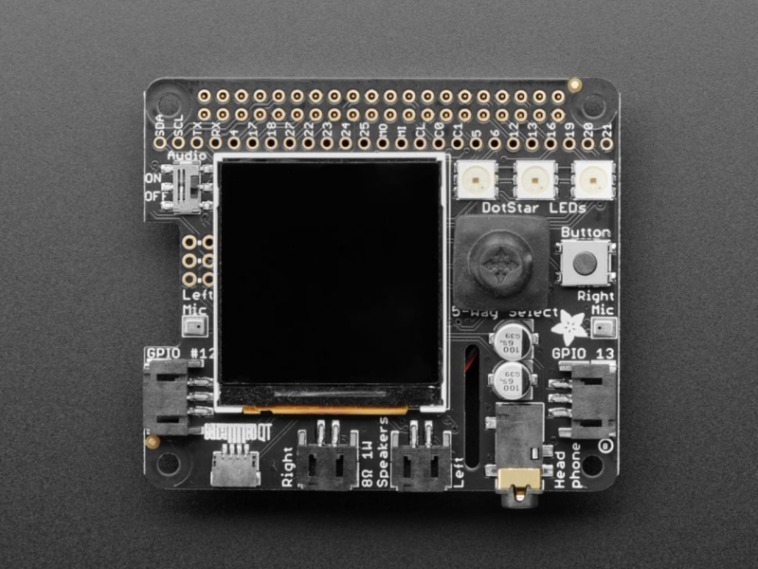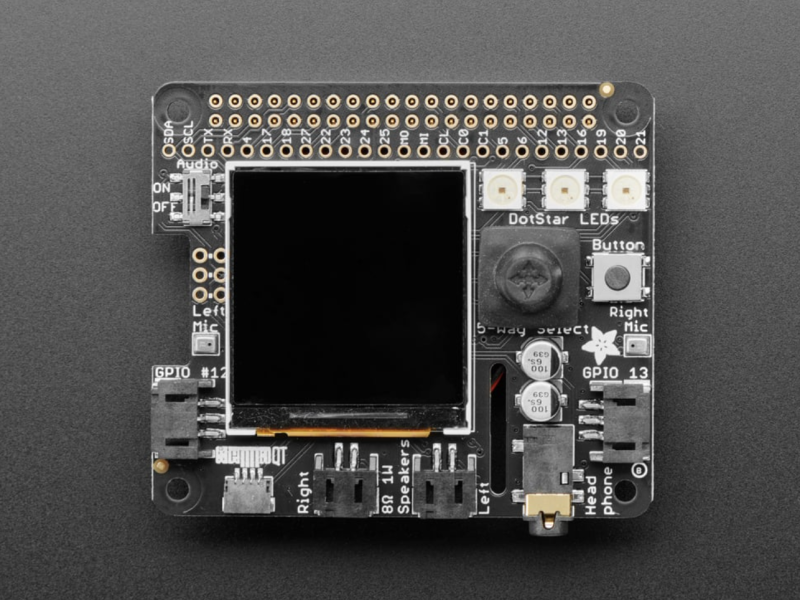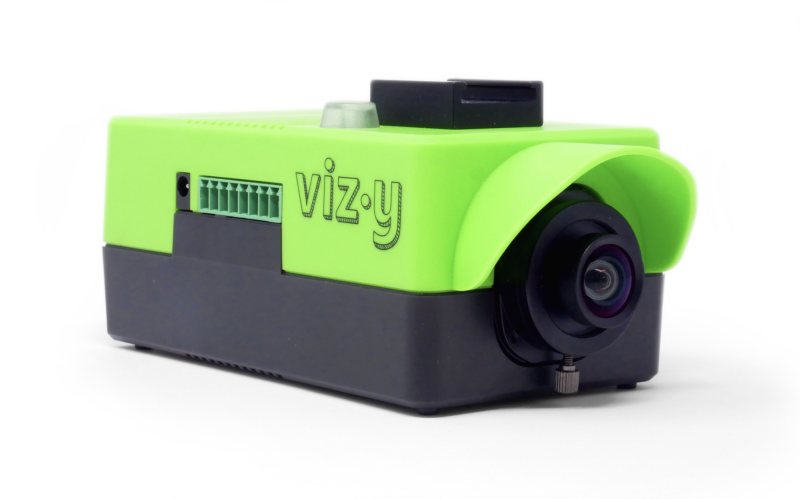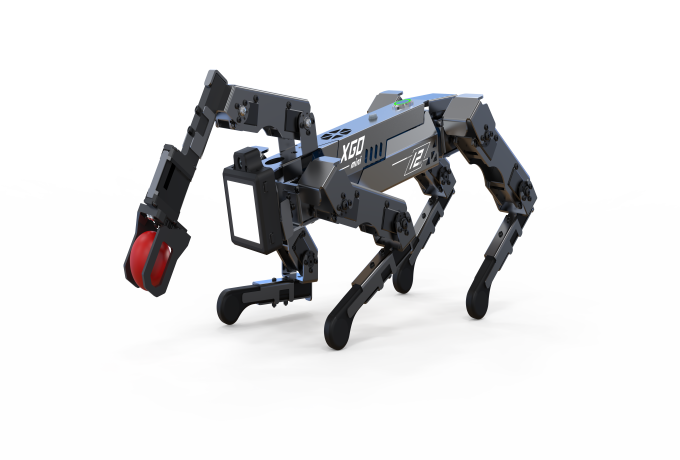Adafruit Braincraft HAT
Built for Raspberry Pi 4, Adafruit’s Braincraft HAT is a pretty comprehensive kit for machine learning. It includes a 1.54-inch 240×240 TFT screen as a display, a joystick to navigate options you might wish to display on it, a cooling fan, three controllable LEDs, plus speaker, headphone and microphone ports to help you build text-to-speech tools or home assistant projects. There’s no integrated camera, but it does include a slot to connect one, as well as a range of other IC2 and JST STEMMA devices.
Adafruit publishes a range of projects targeting the Braincraft, and is currently updating its guides and software to support Raspberry PI OS Bookworm. The legacy version of Raspberry Pi OS Bullseye, which is known to be stable with the HAT, is available via both Raspberry Pi Imager and as a direct download.
Vizy Camera
Like XGO, Vizi camera is driven by a Raspberry Pi, although it’s a standard version, rather than the Compute Module form factor. You can even choose how much RAM you’d like your camera to have.
Once set up on your network, it throws up a local intranet page that you can access from your browser. You can also configure it to be available over the internet. Here, you can access the cam’s feed and run a range of built-in machine learning applications including object identification, motion analysis, a bird species identifier for your bird feeder and a pet detector that can take photos or be used as a trigger for other events. Suggested projects include a treat dispenser or ball launcher.
As you’d expect for something that can be used to spy on garden birds, Vizy can be weatherproofed with an outdoor enclosure. Other add-ons include extra lenses, a 4G adaptor for enhanced portability, and a Power over Ethernet adaptor.
Luwu Dynamics XGO 2
Luwu Dynamics’ XGO Mini 2 and Lite 2 dogs look like desk-sized takes on Boston Dynamics’ Spot robot. The robot can be addressed by a variety of microcontrollers and single-board computers, but the default configuration uses Raspberry Pi CM4.
As well as manual control options, it has a selection of pre-programmed behaviour routines that you can invoke, including object recognition using the Yolo real-time object detection system, voice command recognition, and efforts at gender, emotion and gesture recognition. All of these behaviours are handled by a clutch of Python scripts and their accompanying libraries, which makes them really easy to customise.
If you don’t want to immediately dive into XGO’s scripts, there are also a range of programming interfaces available and custom libraries for controlling the cyberdog body. Your options range from a remote control smartphone app to a Python-based block-based programming interface accessible via a web browser.





